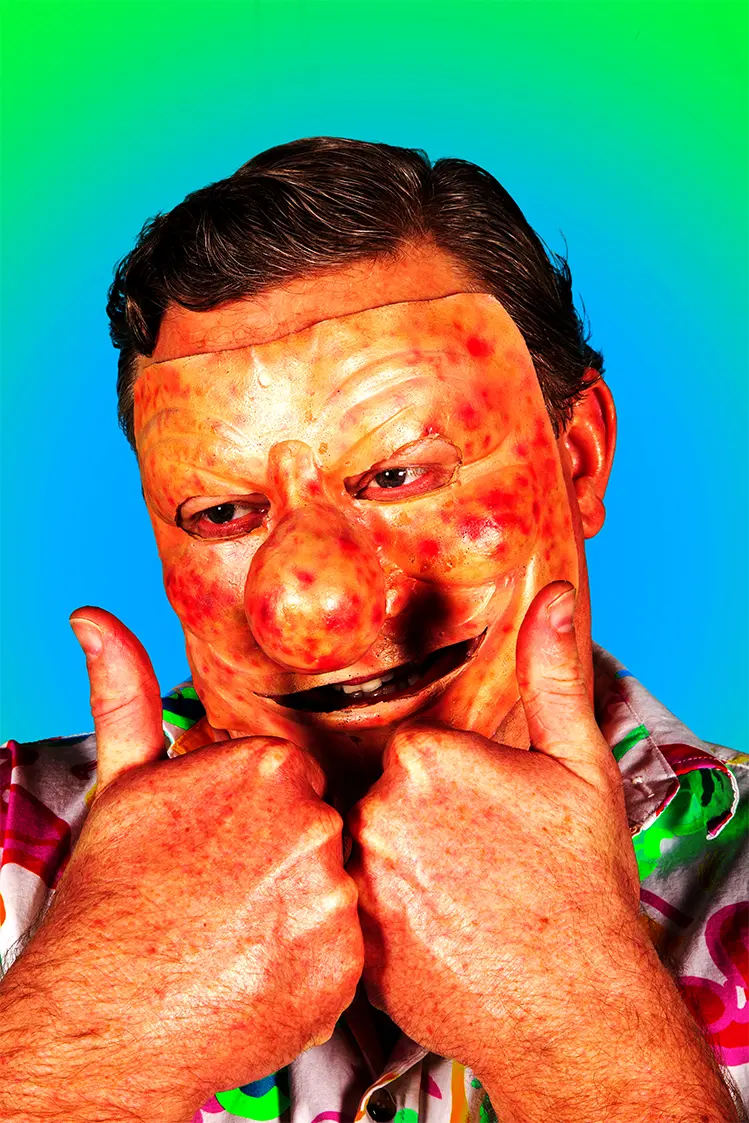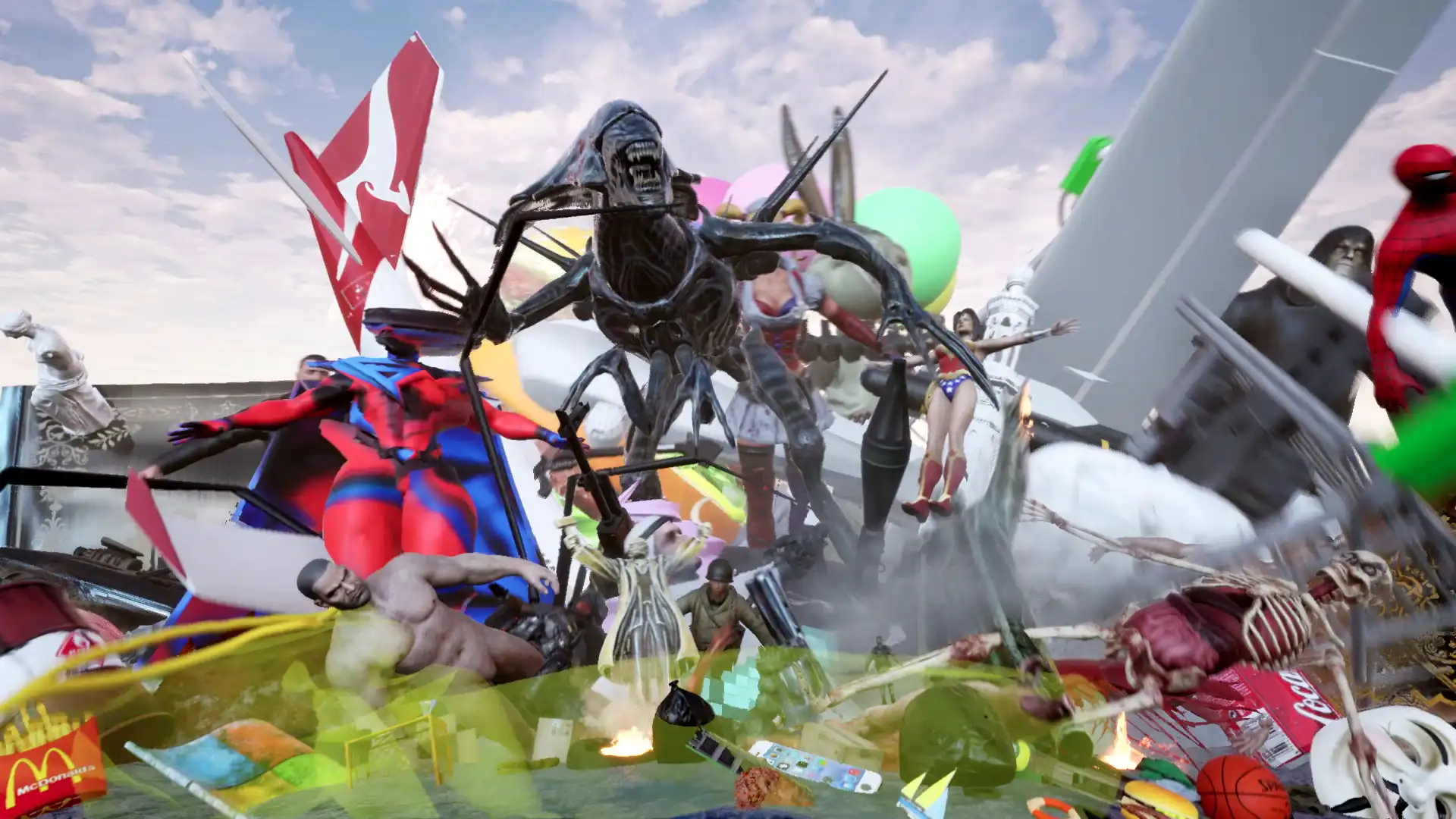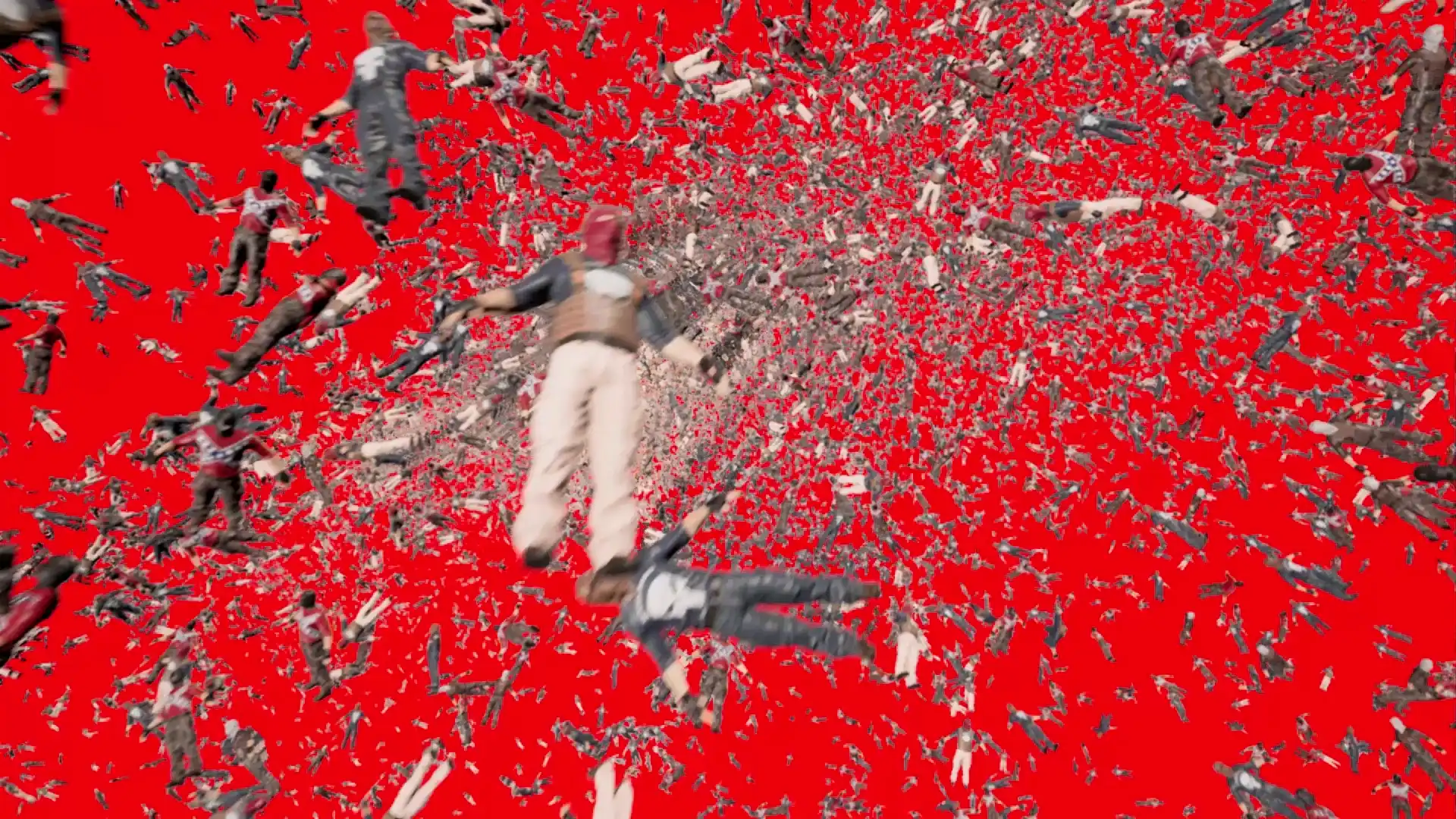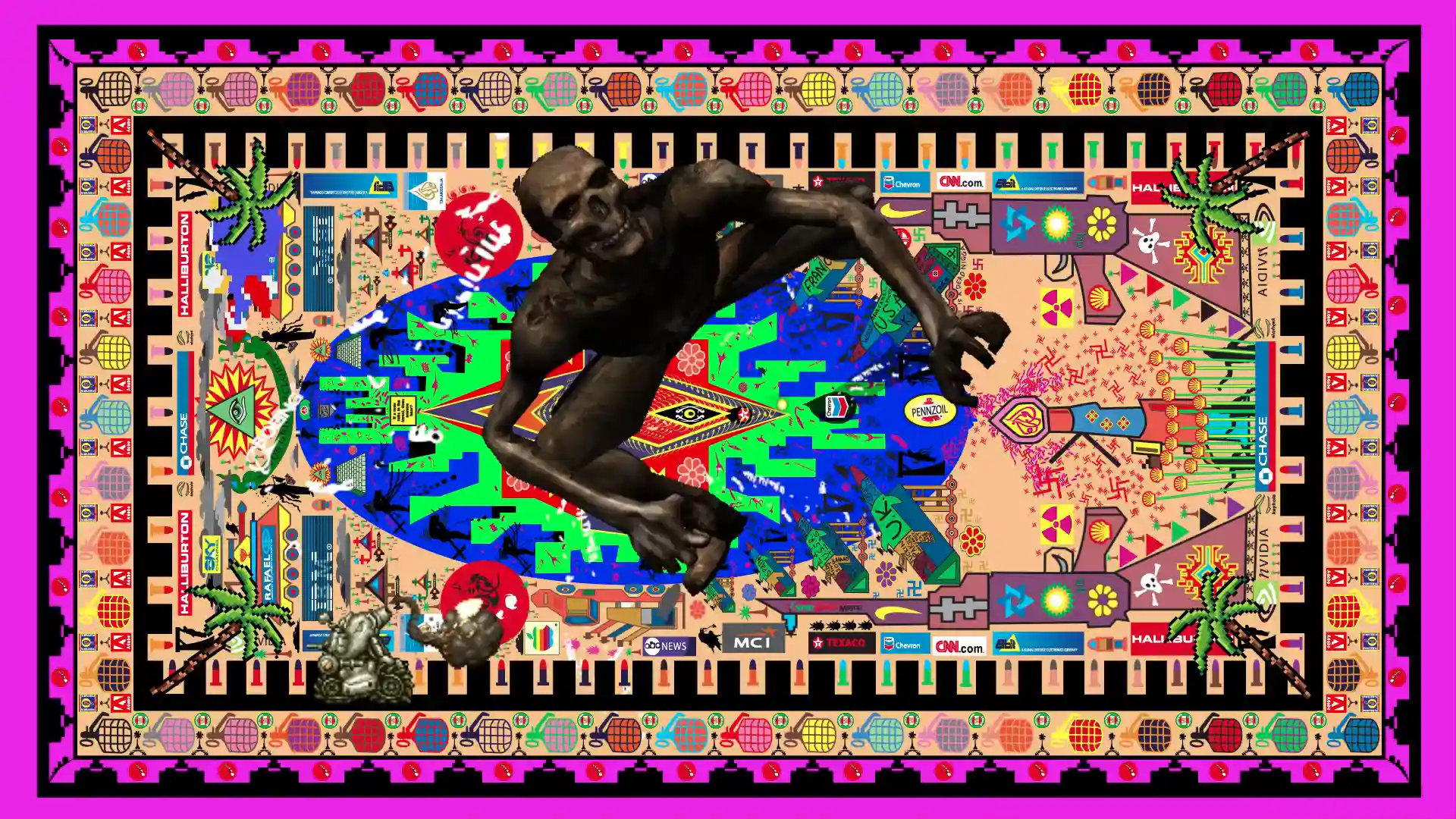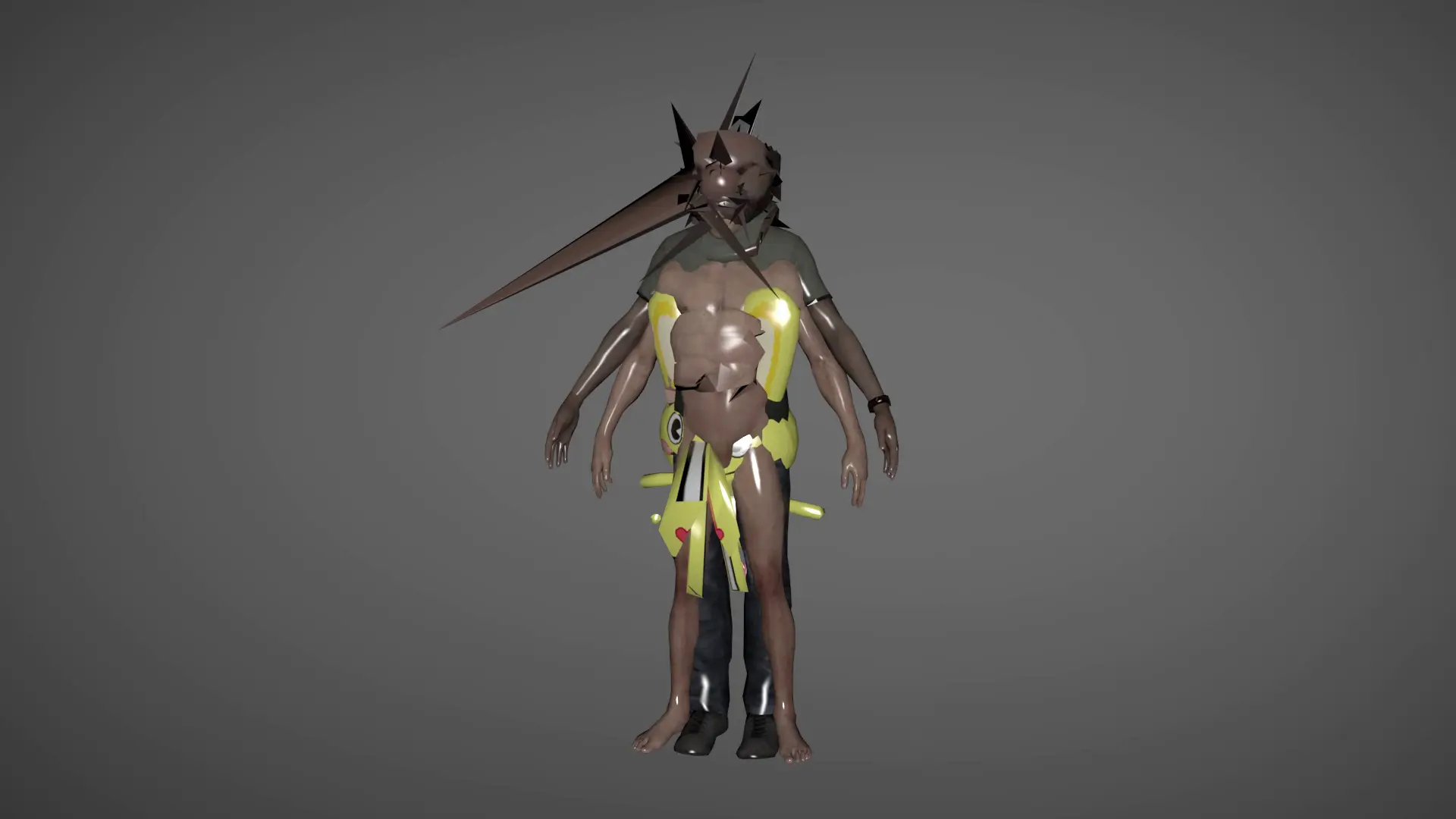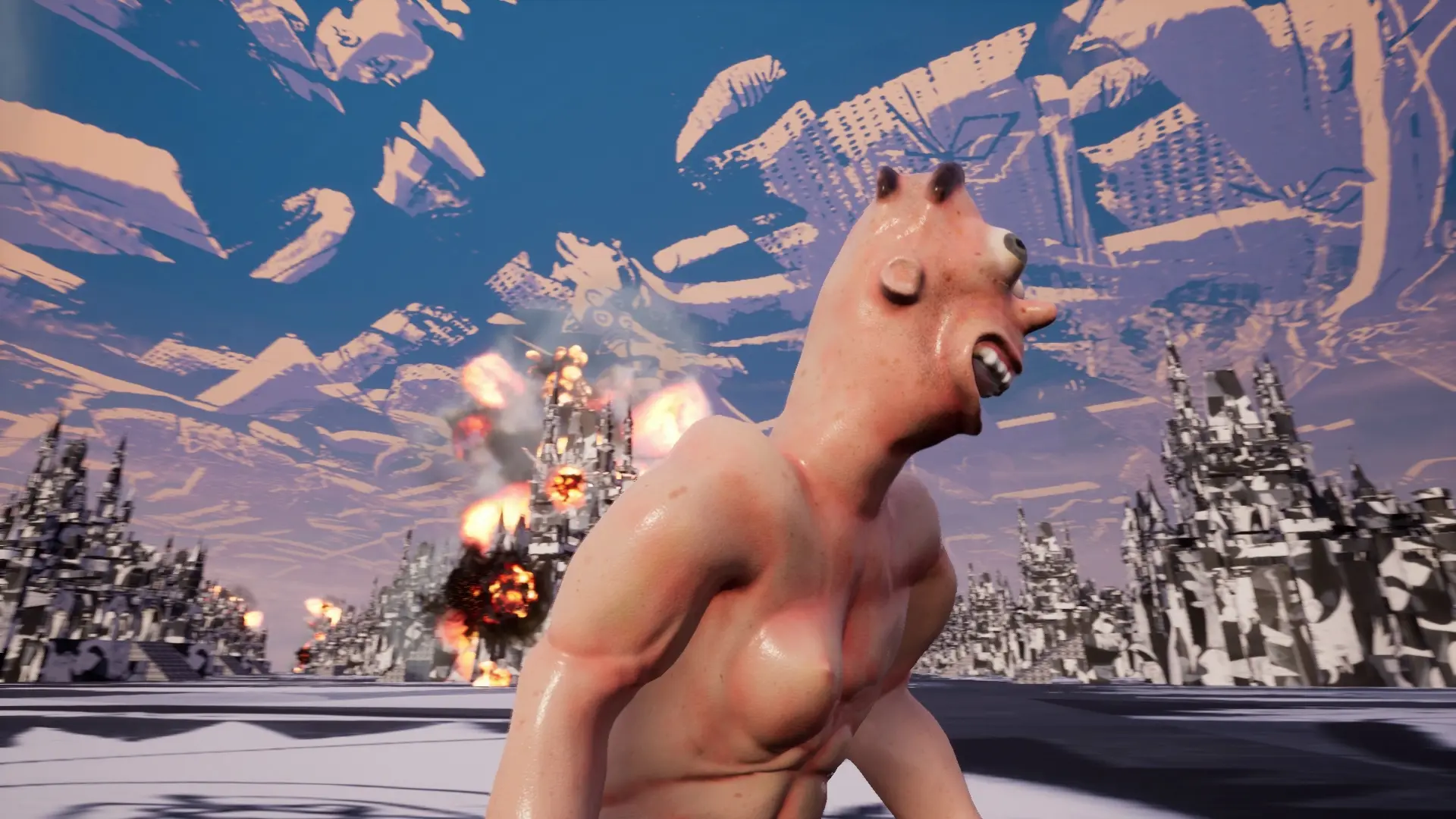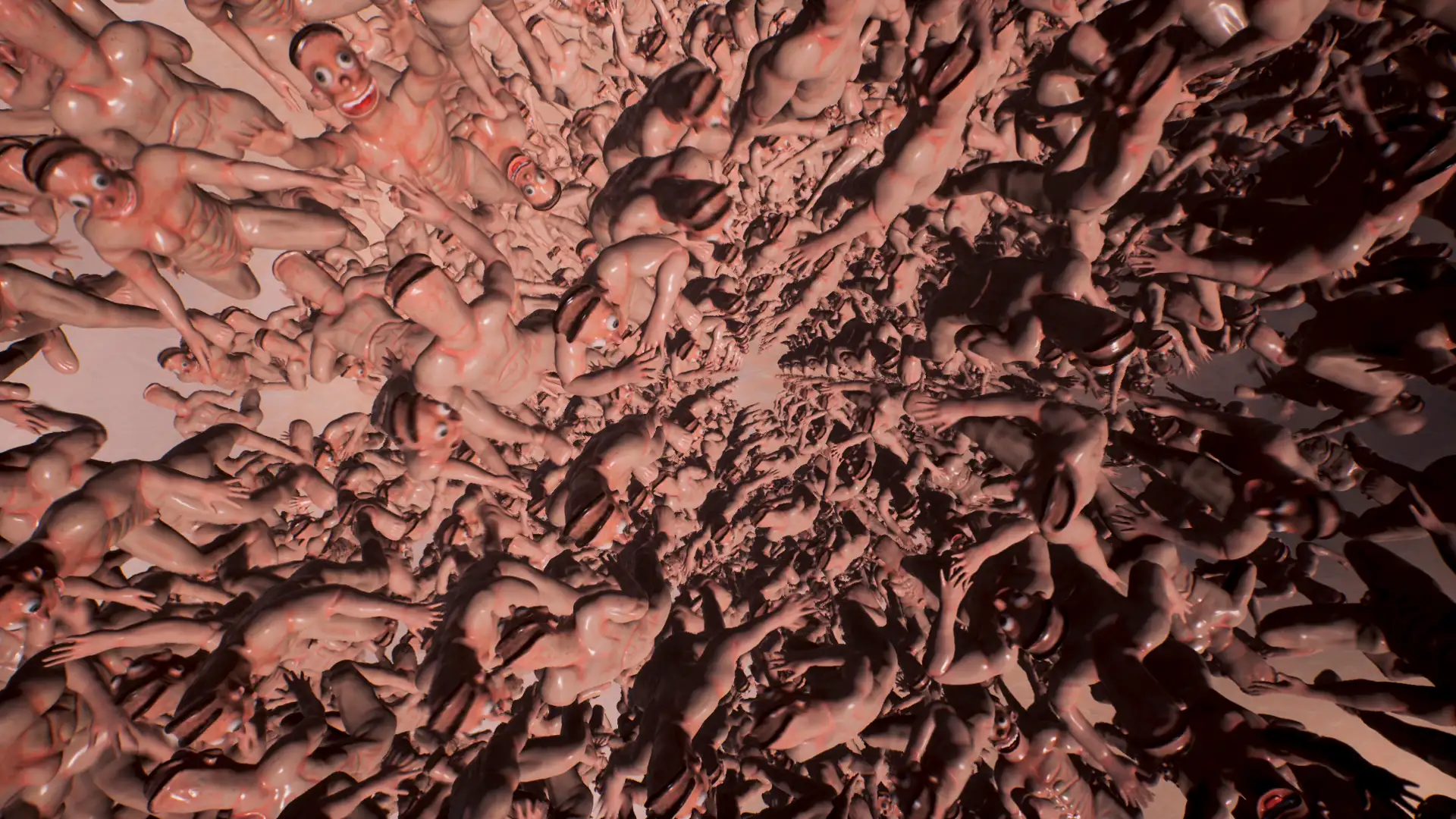By highlighting how pervasive discursive practices complicate what is meaningful and meaningless, Howlett wants to make us aware of how these often-arbitrary judgments shape the particular ideological spaces we find ourselves in. In his latest body of machinima work, including Metropolis (selected for the Premiers Digital Media Award in 2010) it could be argued that Howlett initiates scenes of dissensus where he attempts to subvert the ‘consensus’ that determines conventional political, socio-economic and cultural logics. The idea of dissensus is linked to Jacque Ranciere’s call for a radical rethinking of aesthetic production and political ideas and how they are represented, made ‘visible’ or understood. He also examines how these ideas and images configure our ‘subjectivisation’; that is, how we are de-constituted to a degree within a ‘proper’ social order.

above: Homesteads: Part II, 2009. Machinima video still. PAL, HDTV, 1920 x 1080, 16:9; Installation detail.
Metro Arts, Brisbane. Photography Brock Yates.
These are complex notions, but Ranciere’s idea of dissensus is briefly worth exploring in relation to Howlett’s approach to art making, particularly his strategies of ‘modding’ and recontextualising conventional representational modes in popular screen-based media.
Dissensus is based on a certain impropriety that challenges the hierarchies of visibility that are established through the notion of consensus, that is, what is designated proper and improper within aesthetic and political representations. Dissensus is based on a ‘logic of equality that reveals the arbitrariness of that distribution for political participation and artistic practice.’
It also aims to destabilise consensus in order ‘to loosen the bonds’ of the established hierarchy of representation and reconsider the importance of ‘framing of the sensory world itself’. This means that dissensus becomes a way for understanding a ‘certain reconfiguration of experience itself’. The idea of using dissensus as a form of resisting established order is not predicated so much on avant-gardist strategies of oppositional discourse or the collapsing of art into life, but rather on provoking alternative ways to consider how the ‘boundaries defining certain practices as artistic or political are drawn and redrawn’ (Corcoran and Ranciere, Dissensus: on politics and aesthetics, Continuum International Publishing Group, London, 2010, pp. 2-3).
This is where Howlett can be seen to engage with the realpolitik of the everyday because his practice tends to draw and redraw art and political boundaries.
His practice has for some time investigated the spaces between art and design, actual and virtual sites and political and aesthetic rhetoric. And these spaces have come together with greater coherency in his most recent explorations with machinima that bring several different and ‘improper’ worlds into the consensus of gaming world representations. In these exhibitions the viewer is presented with different formal devices for reading screen-based media, and for representing (and misrepresenting) reality.

clockwise from top: Homesteads, 2009/10. Installation detail. PAL 720 x 576, 16:9, video projection and acrylic wall painting. Metro Arts, Brisbane; Homestead: Machinima video still (two babies with cockroachs), 2009. PAL 720 x 576, 16:9; The Long Con, 2009/10. ‘Flashbacks‘, installation still, single channel. PAL.720 x 576. 16:9. 16 minutes. Metro Arts, Brisbane. Photography Brock Yates; Homestead: Machinima video still (Burning woman), 2009. PAL 720 x 576. 16:9.
These spaces of representation become psychological zones that explore the public and personal realities of the stories we encounter in the work. And by reprogramming these virtual worlds Howlett interrupts their ‘consensus’ as it were so as to make visible how the complicated aggregations and displacements of language, power and narrative operate across real social, cultural, political and economic lives.
Indeed, his art alerts us to how we are subject to a carefully policed media simulated environment; and how this regime of representation needs to be regularly deconstructed by artists. Howlett also tends to play with his own artistic relationship with a consensual democracy that underpins what gets represented in aesthetics and politics.
It is also through the creative use of ‘modding’ that it could be argued that he activates a ‘re-distribution’ or reconsideration of how we view the hierarchies of representation through the technologies that entertains us and monitor our every movement. In this regard, Howlett challenges himself to ‘modify’ the coordinates of artistic and political practice so as to set in motion a re-conception of the consensus of representation that is established by the dominant social reality. This perspective does not assume any self-evident aesthetic or political outcome, but rather activates the process of ‘reconstructing the relationship between places and identities, spectacles and gaze, proximities and distances’ that is at the heart of dissensus. (Carnevale, F. and Kelsey, J. Art of the Possible. Artforum. 45 (7) p. 258. 2007.)
This reconfiguration of aesthetic and political representations is what drives Howlett’s art practice, and like many other practices engaging with these challenges it will take some time to see how these works can ‘loosen the bonds’ of what appears ‘evident and unquestionable’.
notes
1. Nicolas Bourriaud, The Radicant, Lukas & Sternberg, New York, 2009, pp.86-87.
2. Chris Handran, Chris Howlett: Weapons On The Wall, ex. cat., https://www.chrishowlett.com.au/wp-content/uploads/2023/01/IMACatalogue2005.pdf
3. Hal Foster, ‘Arty Party’,London Review of Books, Vol.25, No.23, 4 December, 2003,p.21.
4. M. Bittanti,’All too urban: to live or Die in SimCity’, in Atkins and Krzywinska, eds. Videogame, Player, Text, Manchester University Press, Manchester, 2007, p.35.
5. Jacques Ranciere, Dissensus: On politics and aesthetics, translated by Steven Corcoran, Continuum International Publishing Group, London, 2010, pp.2-3.
6. F. Carnevale, and J. Kelsey, ‘Art of the Possible: An Interview with Jacques Ranciere’, Artforum, 45 (7), 2007′ p.258.O


